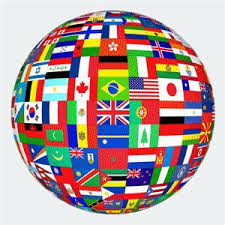Can Essays Help Save Endangered Languages?
Posted on November 2nd, 2013by Melanie
In English, French, Spanish | Leave a Comment »
 As globalization has changed the way we conduct business and interact socially, the need to understand other languages and cultures has increased. Why then, of the 6,000 existing languages in the world, are nearly half of them endangered?
As globalization has changed the way we conduct business and interact socially, the need to understand other languages and cultures has increased. Why then, of the 6,000 existing languages in the world, are nearly half of them endangered?
To be precise, 43% of our world’s languages are currently at risk and about 200 of these are spoken by fewer than ten people. Languages are ‘safe’ when they are spoken by all generations but become vulnerable when, despite most children being able to speak a language, they are restricted with their use of it, such as in their homes. A language becomes classified as endangered when it is not taught to children as their mother tongue, when older generations speak it and parents understand it but do not talk to their children in it, and when grandparents are the youngest speakers of the language and they themselves barely use it. When no-one alive speaks a language, it becomes extinct, and approximately 230 languages have become extinct since 1950. It’s not just a loss of the language, but a loss of the culture that the language related to.
Launching a Linguistic Initiative
The UN is hoping to turn this declining trend around by launching an initiative called ‘Many Languages, One World’. University and college students have been set the challenge of writing an essay in a language other than their own – in one of the six official languages of the United Nations: Spanish, English, Russian, French, Chinese and Arabic. Based on the benefits and uses that multilingualism has in our globalized world, the aim of these essays is to highlight how important linguistics and communication are and to encourage the study of languages in the future, particularly the six official languages of the UN.
Would you learn an endangered language to ensure its survival and revival?

